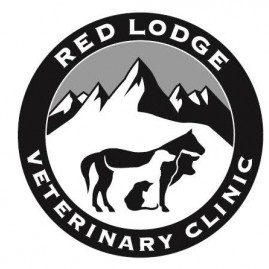Q: I have a barn cat, what vaccines does she need?
A: The core feline vaccines regardless of lifestyle are: Viral Rhinotracheitis (Herpesvirus type 1), Calcivirus, Panleukopenia and Rabies. If your cat is 8 weeks or younger, we recommend the FVRCP combo at 8, 12 and 16 weeks. If your cat is over the age of 16 weeks and has not been vaccinated before, she will need the FVRCP combo vaccine, then re-vaccinated in 3-4 weeks, the FVRCP vaccine is boosted one year after the initial series then every 3 years. The Rabies vaccine can be given as young as 12 weeks, the first Rabies vaccine will be boosted in one year, then every three years.
Q: My indoor/outdoor cat has contact with a lot of other cats, are there any other vaccines I should think about?
A: If she is in contact with a lot of other cats with unknown vaccine history, we recommend vaccinating for Feline Leukemia. The vaccine is administered at 12 weeks of age, boosted in 3-4 weeks then re-vaccinated annually. Before administration of the first vaccine it is recommended to test your cat for Feline Leukemia / Feline Immunodeficiency Virus. This is a quick blood test ran in-house. The reason we test first, is to ensure that your cat has not been exposed to the virus. If she has, the vaccine will not be effective. If your cat tests positive for FeLeuk or FIV, Dr. Gruber will discuss the options you have to manage the disease.
Q: My breeder gave the first vaccine at 5 weeks of age, how may more does my kitten need?
A: Any vaccination administered before 6 weeks of age will not be counted towards the initial series, as the maternal antibodies present from your kittens mom will prevent proper immunity to be acquired from that vaccine. She will still need three vaccines, administered 3-4 weeks apart with the final one at at least 16 weeks.
Q: What exactly is Feline Herpesvirus, Panleukopenia, Calicivirus and Rabies? And why do I need to vaccinate my cat?
Rhinotracheitis (Feline Herpes) FHV
FHV is a herpesvirus that causes the symptoms of sneezing, runny eyes and nose. Because herpes viruses do not go away, chronic infections are the rule.
Transmission
Airborne exposure from coughing or sneezing cats. Contact with infected salivary and respiratory secretions from food or water bowls and equipment.
Symptoms
Runny eyes, nose and sneezing.
FHV may cause permanent damage to nasal sinuses causing long-term sneezing problems or runny nose. FHV may also cause ulcers in the eyes called dendritic ulcers, which are usually seen in animals that are chronically infected.
Panleukopenia (Feline Distemper)
Feline Panleukopenia is related to the Parvovirus of puppies. It causes young kittens born to non-vaccinated mothers to have brain damage.
Transmission
By contact with infected diarrhea, the virus can remain active on inanimate objects for months.
Symptoms
Vomiting, bloody diarrhea, fever, severe anemia, anorexia and lethargy. Older infected kittens will have diarrhea associated with severe immunosuppression. The most severe effect is that it destroys all the white blood cells which prevent the kitten from being able to fight off any disease. Very few kittens survive this disease.
Calicivirus
Feline calicivirus is a virus that may cause the same signs as FHV but usually affects the eyes and lungs more. It causes ulcers on the mouth and tongue. The first sign may be excessive salivation and reluctance to eat. This is followed within 24 hours by ulceration of the tongue that may cause the whole tongue to slough.
Transmission
Through airborne contact with infected saliva, or droplets from sneezing. Along with contact from eye or nasal discharge and occasionally feces.
Symptoms
The first sign may be excessive salivation and reluctance to eat. This is followed within 24 hours by ulceration of the tongue that may cause the whole tongue to slough. Severe pneumonia may also be present. High fever is common. The cats will be very dehydrated with a painful and odorous mouth. Calicivirus may cause pneumonia that leads to death if not treated aggressively.
Rabies
Rabies is an acute progressive viral encephalomyelitis that is fatal once clinical signs appear. It affects animals and humans.
Transmission
Through contact with infected saliva usually through a bite wound. Infected animals can shed the virus up to 8 days before clinical signs appear, which is why there is a 10 day waiting period before euthanizing an acutely aggressive dog or cat. The virus travels from the bite wounds via the peripheral nerves to the brain and then infects that salivary glands.
Symptoms
There are two different forms of Rabies – the ‘Furious Form’ and the ‘Paralytic Form’.
Furious Form – the animal becomes alert and irritable, loud sounds may invite a vicious attack, the animal may attack people other animals or any moving object. The pupils are usually dilated. As the disease progresses ataxia (muscle incoordination), and seizures occur and the animal will die of progressive paralysis.
Paralytic Form – causes ataxia, paralysis of the jaw muscles and throat resulting in excessive drooling and occasionally drooping jaw. The animals with this form may not be vicious and rarely bite. The paralysis progresses rapidly and results in coma and death within a few hours.
Feline Leukemia Virus
A virus that suppresses the immune system causing predisposition to deadly infections. Typically causes anemia and lymphoma. Cats can be carriers and transmit the disease, even if they appear healthy.
Transmission
Saliva, blood and occasionally urine and feces.
Symptoms
Symptoms include pale gums, jaundice, lethargy, anorexia, weight loss, upper respiratory infections, urinary tract infections, enlarged lymph nodes and difficulty breathing. 85% of cats with persistent infection will pass away from complications within the first three years after diagnosis.
Please call 406-446-2815 for more information and to schedule your cat today!

